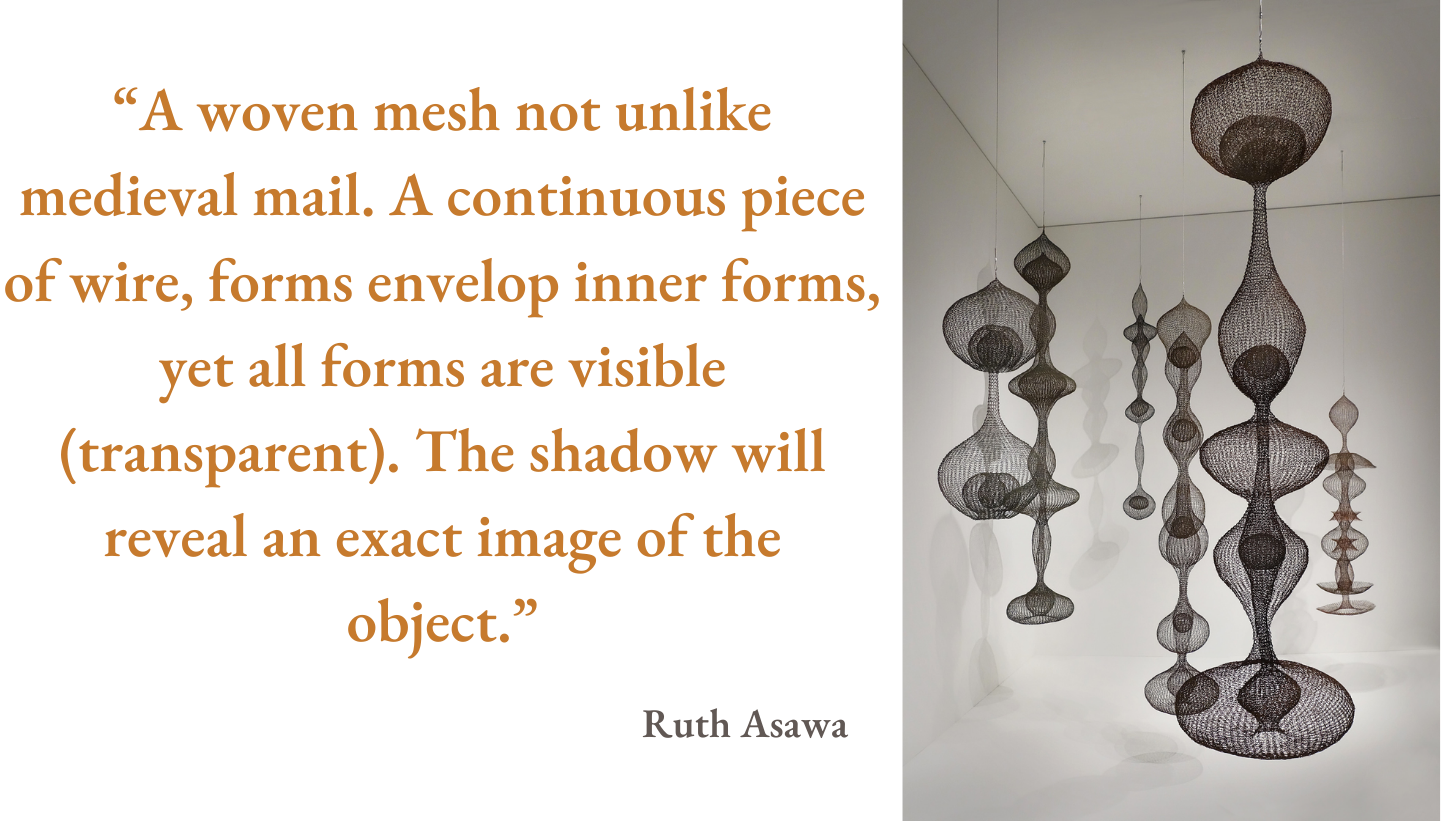Something that interests me...
On the way to uncovering her Ikigai, Ruth Asawa found her art
Ruth Asawa was a renowned American sculptor whose life provides us with a magnificent example for uncovering our Ikigai.
While enduring the injustice of racial prejudice, she remained open to possibility, embracing serendipity, leading to opportunities that guided and developed her art.
Her first foray into art was learning to draw as a child in an internment camp for Japanese Americans during World War II. While in the camps, she was taught drawing by three fellow internees who happened to be Disney artists.
Though released from the camps she was not allowed to go to college on the west coast and instead enrolled at Black Mountain College in North Carolina.
As luck would have it, she arrived at Black Mountain in 1946, when modernist icon Josef Albers was overseeing the art program there.
Asawa came into her own as an artist while studying under Albers and renowned artists John Cage and Franz Kline.
Something I found fascinating, she was also mentored by Buckminster Fuller who was not an artist at all but more an engineer and innovator.
In researching her life, I watched her mostly self-narrated documentary 'Ruth Asawa: Of Forms and Growth.'
Throughout, she explains her work as...something that interests me...or, I'm interested in the movement of...or, I find it interesting to explore.
Her entire expression of art was understanding, exploring, or testing what interested her.
She explored drawing. Then she became interested in making the lines from drawing three-dimensional, which led her to create elaborate folded paper sculptures.
With the encouragement of Fuller, she would later explore another area of interest, creating structure by extending the lines in metal frames.
Her art continued to grow and change as she followed what interested her. She explored an entirely new form by making face masks (pictured at top) of unglazed ceramic in the likeness of family, friends, and fellow artists such as photographer John Gutmann.
She made 233 masks in all working on them for over 45 years.
In her later years, her interests led her to make public art, and promote art in and to her community.
She made fanciful (and often controversial) public fountains. The fountains represented a complete departure from anything she had made before.
Even so, she became known as 'the fountain lady' in her hometown of San Francisco.
Two things about her life struck me; how curious she remained throughout and her complete lack of bitterness despite enduring many more hardships than I’ve room to share here.
"I hold no hostilities for what happened; I blame no one," she said in 1994. "Sometimes good comes through adversity. I would not be who I am today had it not been for the internment, and I like who I am."
She found her Ikigai through following what interested her and remaining open to possibilities even during the most challenging times.
🌀 What interests you?
You can learn more about Asawa’s Ikigai journey by reading here or watching the documentary.




